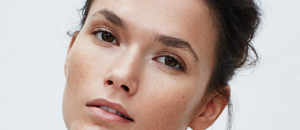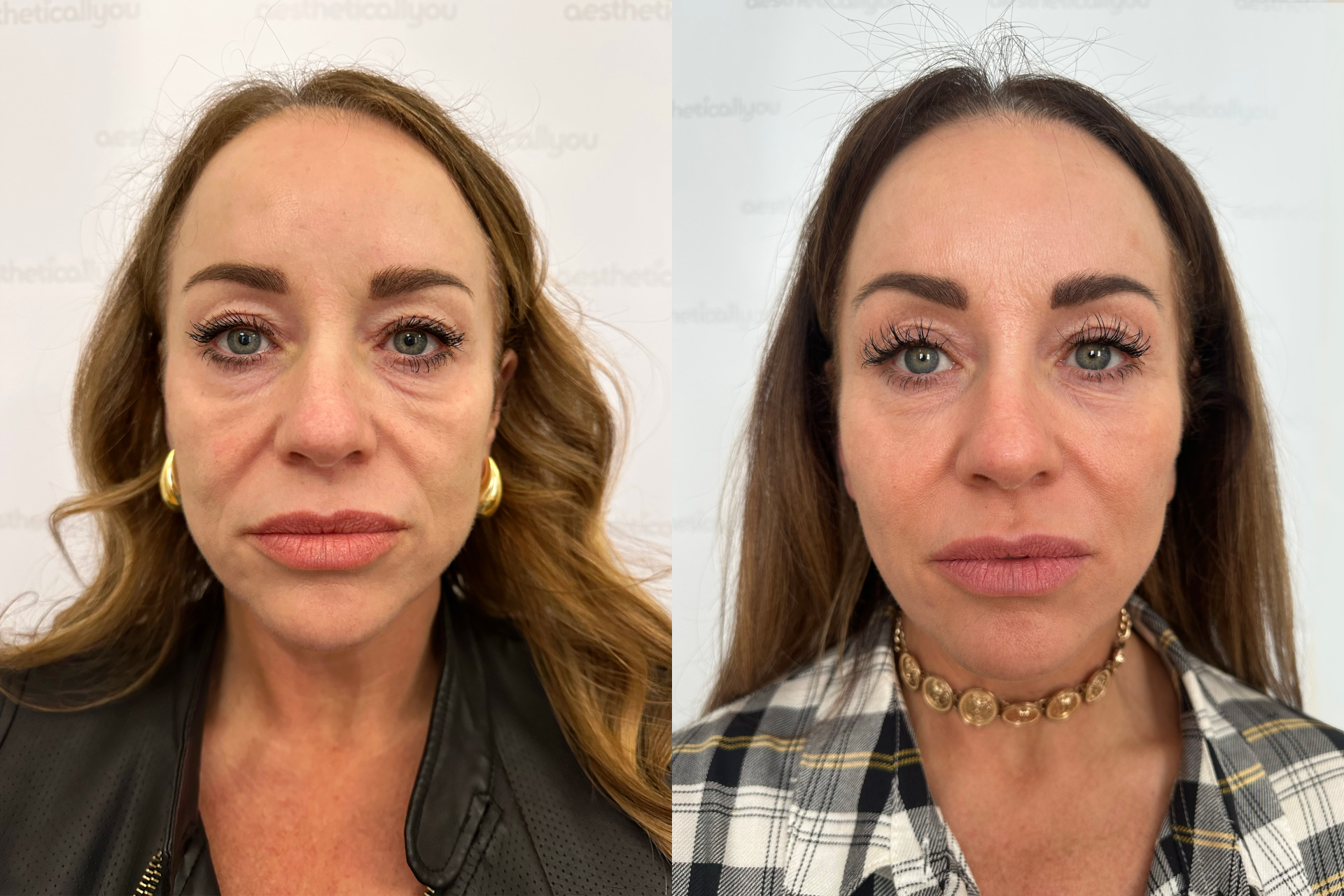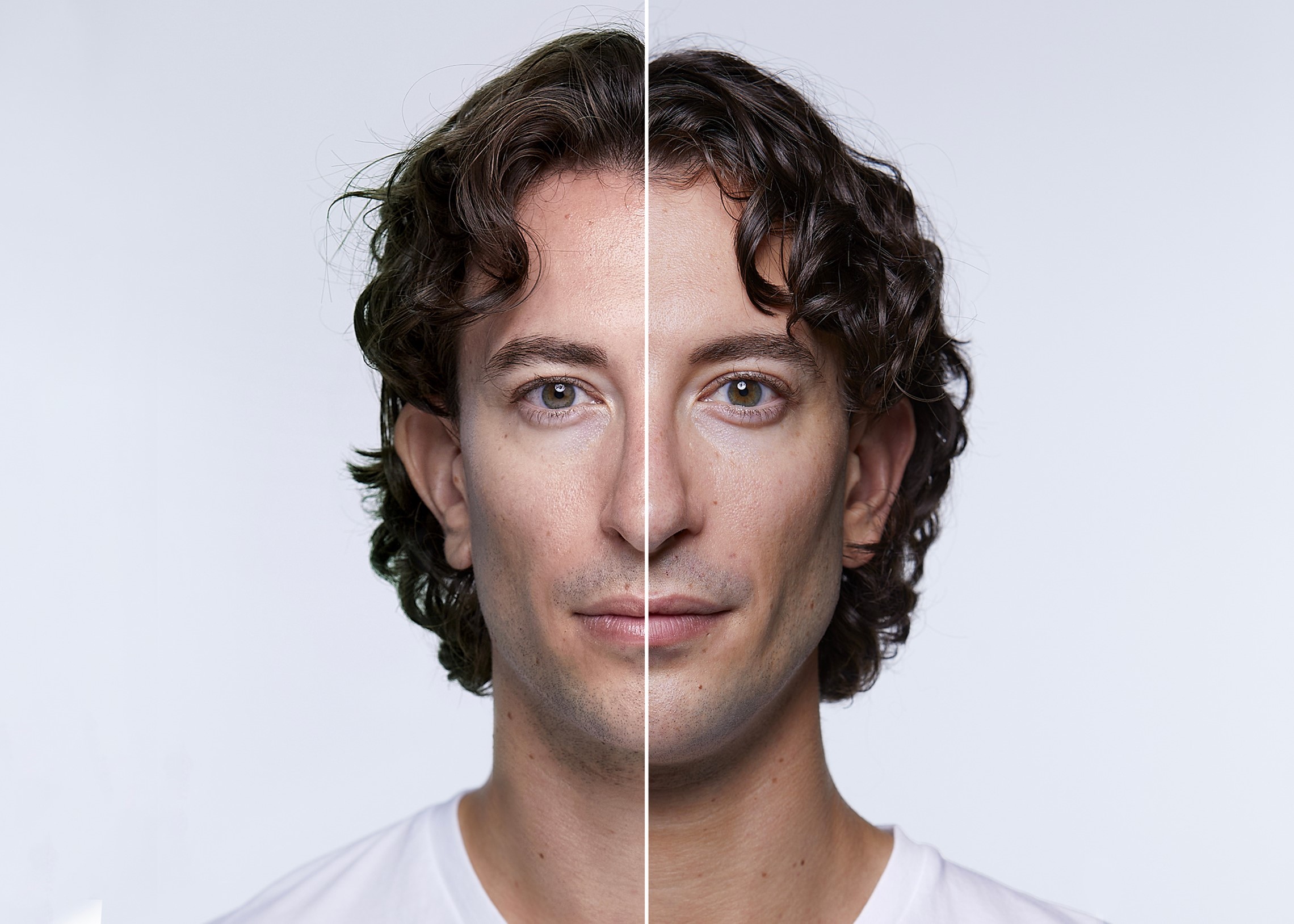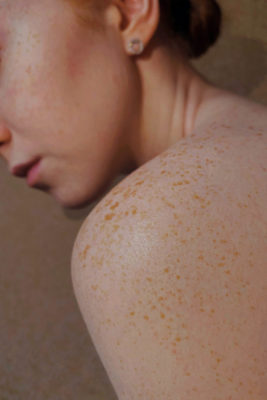
The Aesthetic Treatment Trends Taking Over Clinics In 2025
By
4 months ago
What's looking hot this year?
You might have your skincare and wellness plans sorted for the new year, but what about those little tweakments that give your appearance a (much needed) boost? We asked industry professionals which aesthetic treatment trends we should be looking out for in 2025. Here’s the verdict.
Looking For 2024 Trends? Click Here
The Aesthetic Treatment Trends Taking Over 2025
The world of aesthetics is undergoing a major shift – it’s no longer about going under the knife and adopting a one-treatment-for-all approach. Instead, expect the next 12 months to focus on tailored plans, non-invasive procedures and preventative measures. Intrigued? There are the aesthetic treatment trends we’ll be seeing more of in 2025:
Trends At A Glance
- Hyper-Individualised Facial Aesthetics
- Regenerative Aesthetic Treatments
- Sculptra
- Restylane
- Polynucleotides
- Exosome Therapy
- Anti-Inflammation Treatments
- Prejuvenation
- Multi-Treatment Plans
- AI & Personalisation
- Post-Partum Self-Care
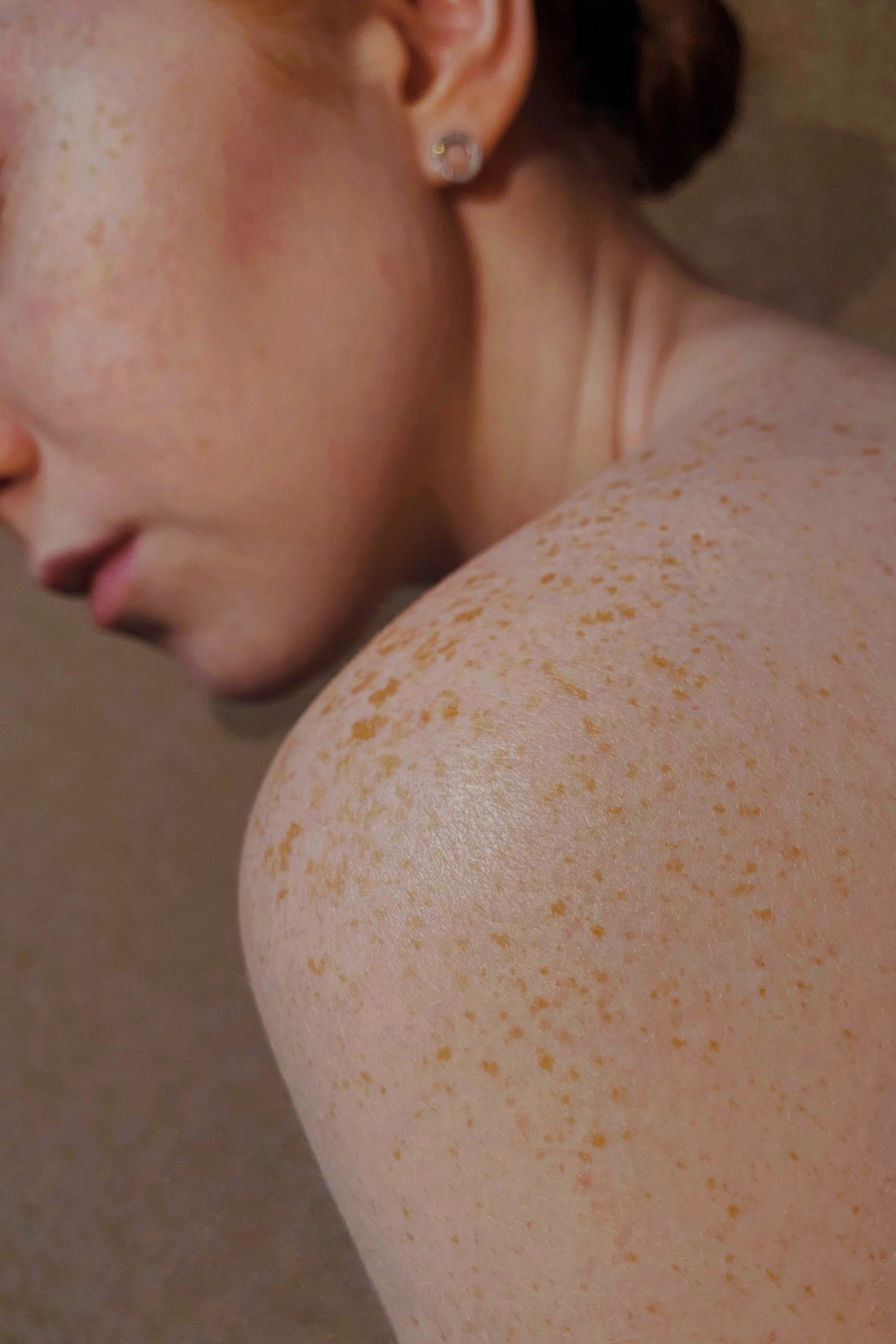
(c) Valeria Smirnova, Unsplash
1. Hyper-Individualised Facial Aesthetics
Long gone are ‘one size fits all’ treatments – 2025 will be the year for personalisation. ‘We expect to see a push for hyper-individualised facial aesthetics in the new year,’ says facial aesthetics specialist, Dean Rhobaye. ‘Leveraging precision tools such as state-of-the-art 3D imaging and AI-powered facial analysis, treatments will focus on enhancing each person’s unique facial anatomy rather than adhering to cookie-cutter beauty standards.’
He sees facial harmonisation – working with and enhancing the features we already have – being an especially popular movement. ‘Facial harmonisation is a highly specialist technique that uses non-surgical and/or minimally-invasive surgical modalities to optimise a patient’s facial proportions, define contours, refine individual facial features and create aesthetic balance,’ he says. ‘Carefully curated procedures will enable practitioners to sculpt harmonious, natural-looking profiles with healthy-looking skin.
‘These techniques include personalised filler placement (using safer, more advanced methods), laser and light-based photo-rejuvenation (working even at a genetic level), minimally-invasive radiofrequency-assisted tissue remodelling (for fat reduction and skin tightening) and bespoke fat grafting (with stem cell rejuvenation). This trend reflects a growing demand for authenticity in beauty, emphasising elegant transformations that offer refined results with a “barely-there” aesthetic.’
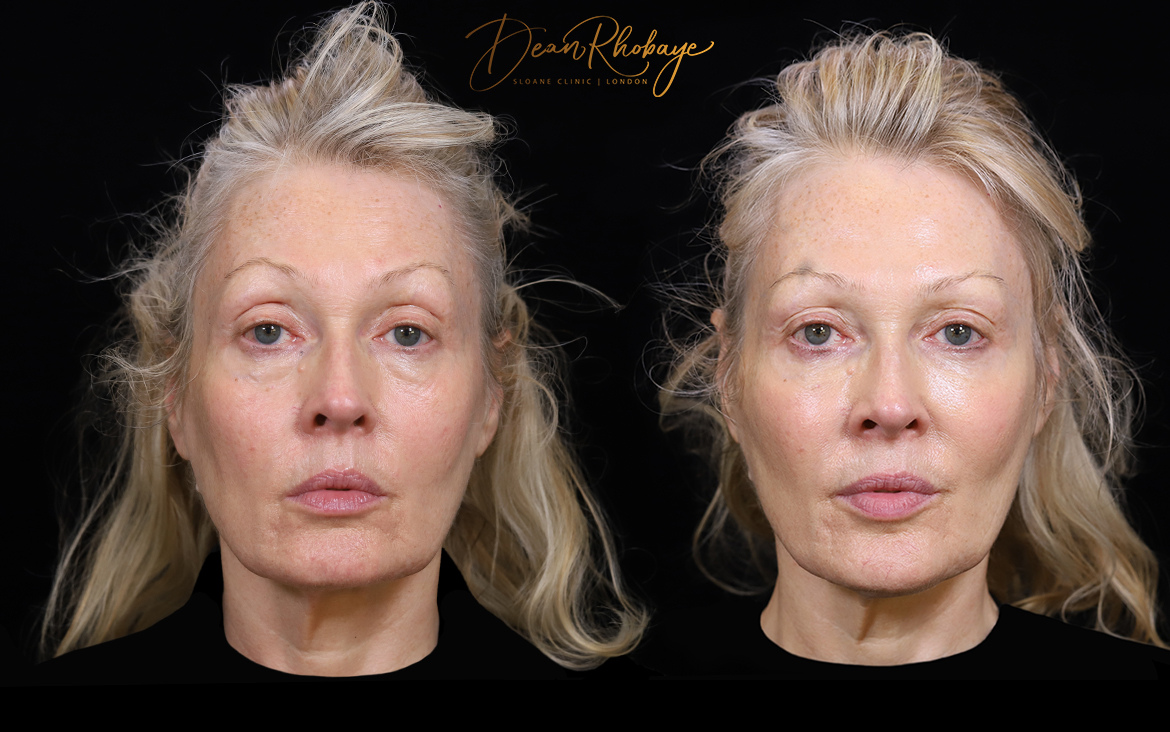
Facial Harmonisation Before & After (c) Dean Rhobaye
2. Regenerative Aesthetic Treatments
First up for the new year: regenerative aesthetics. ‘Stem cell-based and regenerative treatments are expected to make a bigger impact in 2025,’ confirms Dr Nyla Raja, aesthetic practitioner and founder of Dr Nyla Medispa. ‘Platelet-rich plasma (PRP), exosome therapy, and fat grafting are becoming more refined and accessible. These treatments harness the body’s natural healing power to rejuvenate the skin, restore volume, and improve skin texture. This will appeal to those who want to rejuvenate from the inside out with minimal risk and downtime.’
‘Regenerative treatments refer to a range of advanced aesthetic procedures designed to stimulate the body’s own healing and rejuvenating processes,’ adds London-based aesthetic practitioner, Dr Joney De Souza. ‘They focus on improving the quality of the skin by encouraging the production of new cells, collagen, and other important skin components, resulting in a naturally revitalised appearance.’
3. Sculptra
Within the realm of regenerative medicine, the team at Galderma see treatments like Sculptra picking up speed in 2025. ‘Sculptra works by stimulating the skin’s natural collagen production, offering a more gradual, subtle and natural-looking rejuvenation compared to traditional dermal fillers,’ the team tells us. ‘This trend is driven by a growing desire for results that enhance, rather than drastically alter, one’s appearance.’
Speaking more on the regenerative treatment movement, Galderma notes how ‘people are becoming more informed about the benefits of regenerative treatments, and so the focus is shifting toward achieving healthier, youthful skin through the body’s own regenerative processes.’
So where does Sculptra come in? ‘With its ability to restore volume, smooth wrinkles, and improve skin texture, Sculptra is a preferred option for those seeking long-lasting, natural results up to two years, without the need for invasive procedures. As a result, regenerative medicine is rapidly becoming a go-to choice for those looking to embrace aging gracefully.’
4. Restylane
And with preferences leaning even more towards subtle results, the Galderma team tells us we can also expect a rise in ‘less is more’ treatments. ‘This new approach is redefining aesthetic treatments, with a growing preference for subtle, natural-looking enhancements over dramatic transformations,’ they add. ‘Hyaluronic acid (HA) filler brand Restylane is at the forefront of this trend. Thanks to its high G-prime – a measure of the filler’s firmness and lifting capacity – Restylane allows practitioners to achieve noticeable results with less product. This means more natural contours, refined volume, and a fresher appearance without the risk of an overfilled look.’
Galderma highlights that this ‘aligns perfectly with patient demand for discreet, undetectable enhancements. Restylane prioritises quality over quantity. The precision and efficiency of Restylane’s formulation enable practitioners to restore youthful volume, smooth fine lines, and enhance facial features using fewer injections. This results in a balanced, harmonious look that feels both fresh and authentic.’
5. Polynucleotides
A hot topic over the last year, we can also expect polynucleotides to emerge as one of the leading regenerative aesthetic treatment trends of 2025. ‘Polynucleotides are gaining buzz for their ability to deeply rejuvenate the skin,’ highlights Dr Ifeoma Ejikeme, an award-winning skin expert, aesthetics practitioner and founder and Medical Director of the Adonia Medical Clinic. ‘These powerful molecules repair and regenerate at a cellular level, improving hydration, elasticity, and texture. Think of them as your skin’s secret weapon for a natural, luminous glow; they are perfect for anyone looking to improve fine lines, scarring, or overall skin health. We’re seeing this emerge as a go-to option because it delivers noticeable results with minimal downtime – ideal for busy schedules.’
You can read more about polynucleotides (and their benefits) here.
6. Exosome Therapy
Another treatment Dr Joney De Souza sees being big is exosome therapy. ‘This is a treatment designed for those wanting cutting-edge anti-ageing solutions, as well as those with scarring, pigmentation, or general skin rejuvenation needs,’ he explains. ‘Exosomes are cell-derived vesicles that deliver growth factors and other regenerative signals to the skin, enhancing collagen production and tissue repair. The treatment can be applied via microneedling or injectables to deliver these potent healing agents, with the results addressing fine lines, uneven skin tone, scarring and loss of skin vitality.’
7. Multi-Treatment Plans
Long gone are the days of sticking to one treatment, and expecting it to do everything. Instead, we’re going to see a rise in combination therapies – or multi-treatment plans – in 2025. ‘As the demand for tailored, results-driven treatments continues to rise, 2025 is set to be the year of combination therapies that deliver,’ says Dr Ireny Salama, an aesthetic doctor at The HVN. ‘Some of the treatments I see being employed together include:
- Fotona Laser 4D/5D, a series of cutting-edge laser treatments to restore skin tone and texture
- Polynucleotides, to deeply regenerate and hydrate the skin, promoting radiance and elasticity
- Hyperbaric Oxygen Chamber treatments, to accelerate healing and boost cellular repair
- And Optional HarmonyCa Injections, a revolutionary hybrid injection technique that stimulates natural collagen production for a youthful, lifted appearance that lasts for years.’
Dr Nyla Raja similarly sees this trend becoming more commonplace in practices. ‘As we look towards 2025, the field of aesthetic treatments is evolving rapidly to focus on more personalised and comprehensive approaches,’ she highlights. ‘One of the most notable trends will be the shift towards multi-treatment plans, where patients receive a bespoke combination of treatments tailored to their specific needs and goals. Rather than focusing on a single solution, this approach allows for a holistic and more effective outcome.
‘At my clinics, we’ve already been practicing this with our Transformation Facelift™, Transformation Bodylift™, and Tone & Tite Therapy™ treatment plans,’ the aesthetic practitioner tells us. ‘These plans are not about one-size-fits-all solutions. Instead, we create individualised journeys for each patient, incorporating various treatments like skin tightening, facial volumisation, non-surgical facelifts, and body contouring, ensuring that every aspect of a patient’s appearance is addressed for natural, long-lasting results. By combining different modalities, we can optimise the results and ensure that patients achieve their desired aesthetic outcomes with minimal downtime. As we move into 2025, I believe we will see more patients seeking these comprehensive treatment plans, tailored to enhance the face and body in a way that aligns with their unique features and goals.’

(c) Tima Miroshnichenko, Pexels
8. Anti-Inflammation Treatments
And when it comes to treating the skin specifically, expect a rapid rise in anti-inflammation procedures. ‘As we move into 2025, prioritising anti-inflammatory treatments will become essential for maintaining youthful, healthy skin in an increasingly stressful world,’ notes Dr Brendan Khong, founder and Medical Director at Dr BK Aesthetics Clinic. ‘Modern lifestyles are inherently pro-inflammatory, with habits like smoking, excessive alcohol consumption, high sugar intake, and poor sleep exacerbating the issue. Chronic inflammation can significantly impact skin health, accelerating the breakdown of collagen and elastin, damaging the skin barrier, promoting cellular aging, and increasing oxidative stress.
‘Many popular machine-based treatments in the beauty industry, while effective, can sometimes be too harsh, causing unnecessary damage to healthy skin tissue,’ he adds. ‘However, there are innovative technologies that focus on reducing inflammation rather than exacerbating it. One such treatment that I’ve been using for years in Singapore and have recently introduced to my clinic is the Aerolase laser. This advanced device not only targets inflammation but also effectively treats up to 36 FDA-approved medical conditions, including acne, rosacea, and melasma. What sets Aerolase apart is its versatility and safety. It’s suitable for all skin types, including Fitzpatrick skin types IV-VI, which are often overlooked when it comes to laser treatments. Additionally, the Aerolase laser can be combined with complementary therapies such as exosomes and chemical peels for enhanced results.’
9. Prejuvenation
Our experts also note an interest in preventative measures amongst its younger clients, with ‘prejuvenation’ becoming a major overall aesthetic treatment trend for 2025. ‘Expect a more proactive approach to skincare; “prejuvenation” is all about prevention,’ says Dr Joney De Souza. ‘Younger clients, particularly those in their twenties, are opting for techniques that avoid injectables while still addressing early signs of ageing. This includes light laser therapies, gentle chemical peels, and resurfacing treatments to maintain skin health and prevent wrinkles and sagging.’
The doctor notes that there is now a greater demand for ‘customised preventative treatments that lift and tighten the skin without injectables’, such as advanced laser therapies, RF Microneedling, and Ultherapy PRIME. ‘These less invasive therapies offer significant benefits: minimal downtime, reduced risks, and proven results,’ he adds. ‘They also target early signs of aging, promoting healthier, more youthful skin while preventing issues before they arise.’

(c) Jessica Felicio, Unsplash
10. AI & Personalisation
Another way we’re seeing more personalised treatments flourish? Through AI. ‘Personalisation is becoming ever more important,’ confirms award-winning aesthetic doctor, Dr Sophie Shotter. ‘Whether it’s skincare, treatments or health protocols, people are realising there is no one-size-fits-all approach and looking for a more personal solution.’
Dr Shotter also tells us that this approach is being taken in combination with artificial intelligence, to better monitor and tailor treatments. ‘AI will be used more and more,’ she says. ‘We are using it in clinic with our Aura imaging device, which uses clinical photography combined with AI to generate a digital twin. This allows us to show patients their own faces in 3D to explain a proposed treatment, as well as allowing us to show them results over time, minimising the risk of perception drift.’
11. Post-Partum Self-Care
Another demographic making waves in the clinic is young parents. As London-based aesthetic practitioner Dr Priya Verma notes: ‘The demands of pregnancy can result in post-partum abdominal skin laxity, which for so many women negatively affects their confidence, self-esteem and identity.’
With this in mind, she also sees more non-invasive treatments becoming a popular trend. ‘With the rise of minimally invasive lasers, such as Endolift and regenerative aesthetic treatments such as polynucleotides, we can improve the health of stretched abdominal skin, melt away stubborn pockets of fat, and ultimately restore confidence without the need for surgery.’
Featured image: Alexander Krivitskiy, Pexels
This article is created and funded by Galderma.
Adverse events should be reported. Reporting forms and information can be found at www.mhra.gov.uk/yellowcard or search for MHRA Yellow Card in the Google Play or Apple App Store. Adverse events should also be reported to Galderma (UK) Ltd: E-mail: [email protected] Tel: +44 (0)300 303567
UKI-RES-2400040 December 2024


